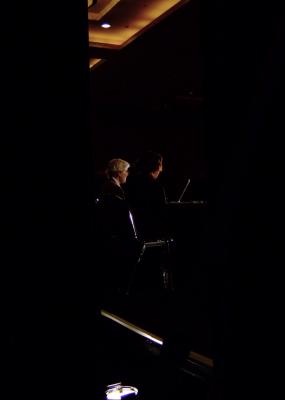
CNU XV Day Four and Five
Follow the concluding days of the Congress online, including "small is big," DPM Prescott, Michael Nutter, Denise Scott Brown, and Ed Mazria's interest in expanding the 2030 challenge into planning
Submitted on 05/21/2007. Tags for this image:Warning: Table './archive_cnu/watchdog' is marked as crashed and should be repaired query: INSERT INTO watchdog (uid, type, message, variables, severity, link, location, referer, hostname, timestamp) VALUES (0, 'php', '%message in %file on line %line.', 'a:4:{s:6:\"%error\";s:7:\"warning\";s:8:\"%message\";s:39:\"Invalid argument supplied for foreach()\";s:5:\"%file\";s:100:\"/var/www/archive.cnu.org/htdocs/sites/cnu.civicactions.net/themes/cnu/node-content_news_item.tpl.php\";s:5:\"%line\";i:13;}', 3, '', 'http://archive.cnu.org/cnu-news/2007/05/cnu-xv-day-four-and-five', '', '3.137.173.98', 1732345368) in /var/www/archive.cnu.org/htdocs/includes/database.mysql.inc on line 135
 Download ( 0B)
Download ( 0B)By Ben Brown
Saturday sessions at the 15th annual CNU Congress kicked off with the morning plenary presentation of the much-admired Swedish architect Kjell Forshed, who contributed so much to the design of the critically acclaimed infill neighborhood of Sankt Erik in Stockholm. Examples of European New Urbanism are continuing to cross the Atlantic and inspire planners and designers in the US. So hearing from leaders in this effort in England, Sweden, and elsewhere has become a staple of these CNU gatherings.
One of the most reassuring of trends in Congress sessions is the convergence of several apparently parallel conversations into broad, interconnected themes. A key example is the Katrina Cottage effort, begun during the post-Katrina Mississippi Renewal Forum in 2005 when the South Misssissippi Sun Herald newspaper published Marianne Cusato’s initial design for emergency housing that could seed a permanent neighborhood. Since then, the Katrina Cottage phenomenon has blossomed.
During the Saturday morning concurrent session – “Is Small the New Big?” – Cusato, Louis Maquet of the LeylandAlliance LLC, and New Urbanist market analyst Laurie Volk discussed the ways in which “right-sized” design plugs into community affordability, energy efficiency, transit-oriented development, senior housing, and other New Urbanist concerns.
Similar interconnections were highlighted on Saturday with sessions on “Retail Along the Transect,” farmland preservation, storm water management, public health and New Urbanism, and boulevard design. There were reports on New Urbanist efforts in Detroit and New Orleans. One of the most inspiring developments is of the combined work of Peter Calthorpe, Andres Duany, and Urban Design Associates with the Louisiana Recovery Authority – particularly UDA’s precedent-setting publications – the Louisiana Speaks Pattern Book and Planning Tool Kit. Urban Design Associates principal Ray Gindroz told attendees assembling the Pattern Book and Tool Kit “was like writing the Bible with all the prophets looking over your shoulder and arguing over every sentence.”
Our bloggers continue to file reports and perspectives about sessions they attended. Go to our main Salon page for a complete list of topics and blogs.
Saturday night’s plenary saw appearances and presentations from the Rt. Hon. John Prescott MP and Deputy Prime Minister of Great Britain and from Rep. Barney Frank (D-MA). Saturday night’s provocative keynote was delivered by Robert A.M. Stern, the renowned architect and dean of Yale’s School of Architecture.
Highlighting the Sunday morning closing plenary were challenges from Denise Scott Brown -- recipient of the CNU’s Athena Medal for her work connecting pop culture, design, and urbanism -- and from architect Edward Mazria and Scott Bernstein, president of the Center for Neighborhood Technology. Brown offered an overview of the history of urbanism and a glance at the future.
Mazria, founder of the Architecture 2030 effort to push building design to the forefront of efforts to reverse global warming, and Bernstein presented convincing data, not only of the necessity to act immediately to change the direction of climate change but also of the role of both individual building design and neighborhood and city planning in leading that turn-around. Click here for more information.

